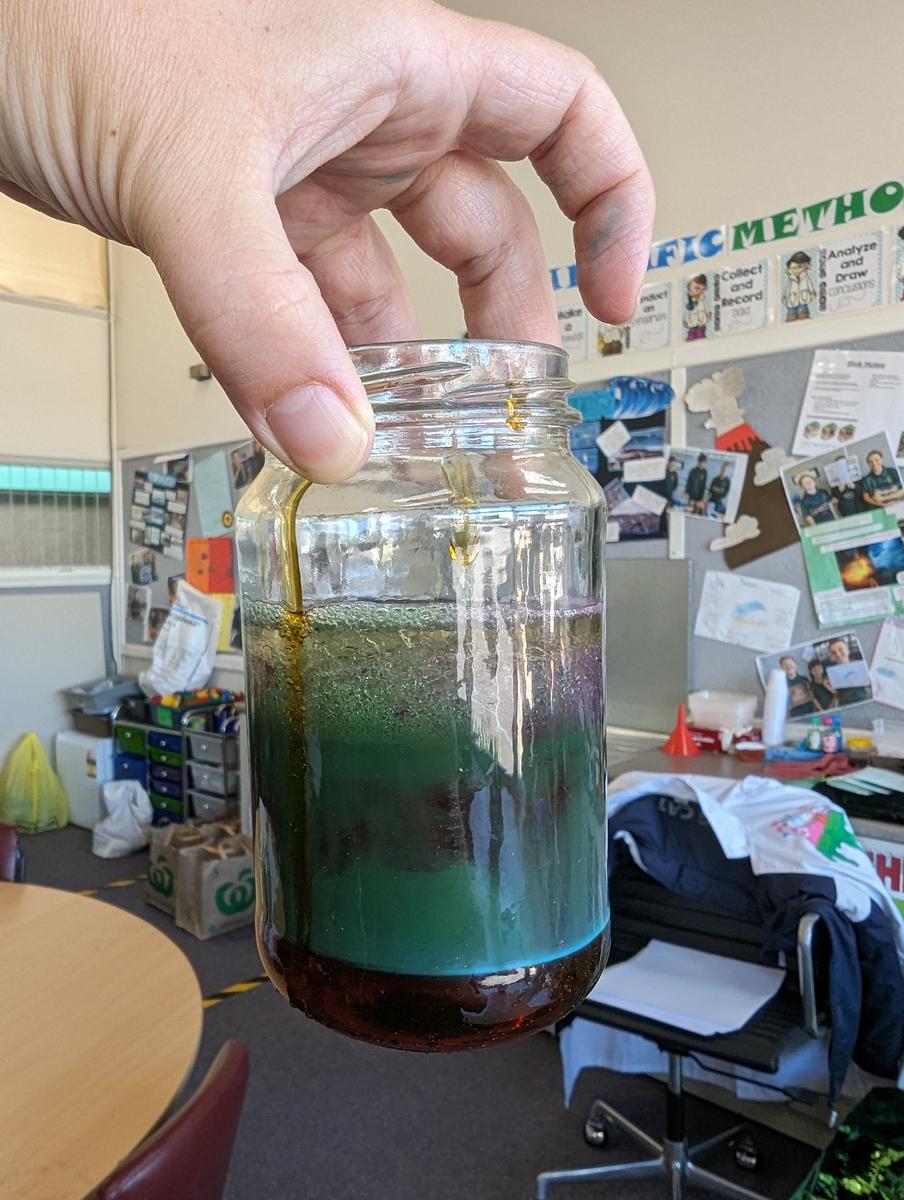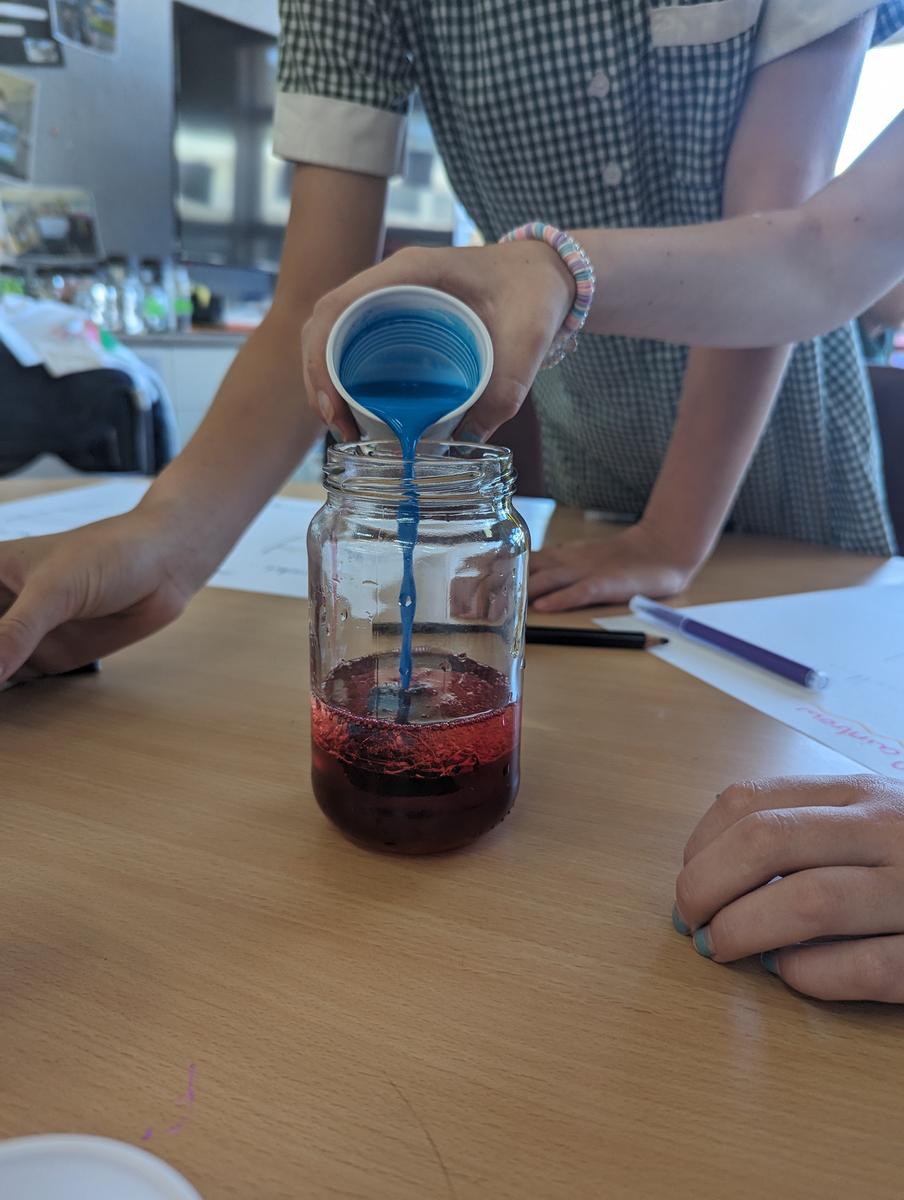Science
You matter. Unless you multiply yourself times the speed of light squared. Then you energy.

Science
You matter. Unless you multiply yourself times the speed of light squared. Then you energy.
We look forward to partnering with you in 2024, and welcome your input:
Hayley Oliver (Science) Hayley.Oliver@education.vic.gov.au


Wow!! I can’t believe we have come to the end of Term 1! It seems like only yesterday I was welcoming the students into the Science room and now we’ve finished a whole term of Chemical Science! Enjoy the break and I look forward to seeing everyone next term!
The grade 3/4 students finally got to do what they had been building up to, all term, THE GREAT ICY POLE CHALLENGE!! Over the term we have learnt about solids and liquids and how they can change state. We have also learnt that when heat is applied to a number of different solids, they melt. The challenge was to create something that could stop or slow an icy pole melting, over a 20-minute time period. The students learnt about the Scientific Method, and used it to conduct our experiment. First, they came up with an overarching question, then a hypothesis to support the question. They then had to draw an annotated diagram of their insulation and create it. Finally it was time for the experiment! The students were given an icy pole cut in half, half to eat and half to use for their experiment. They had to draw up a table and every 5 minutes check on their icy pole and note any observations (specifically if it was melting or still solid), they did this for 20 minutes. Once the time was up, they analysed their data and reported their findings. It was exciting to see that the majority of students chose appropriate insulation and still at a pretty solid icy pole at the end of it all (which of course, they could eat)!






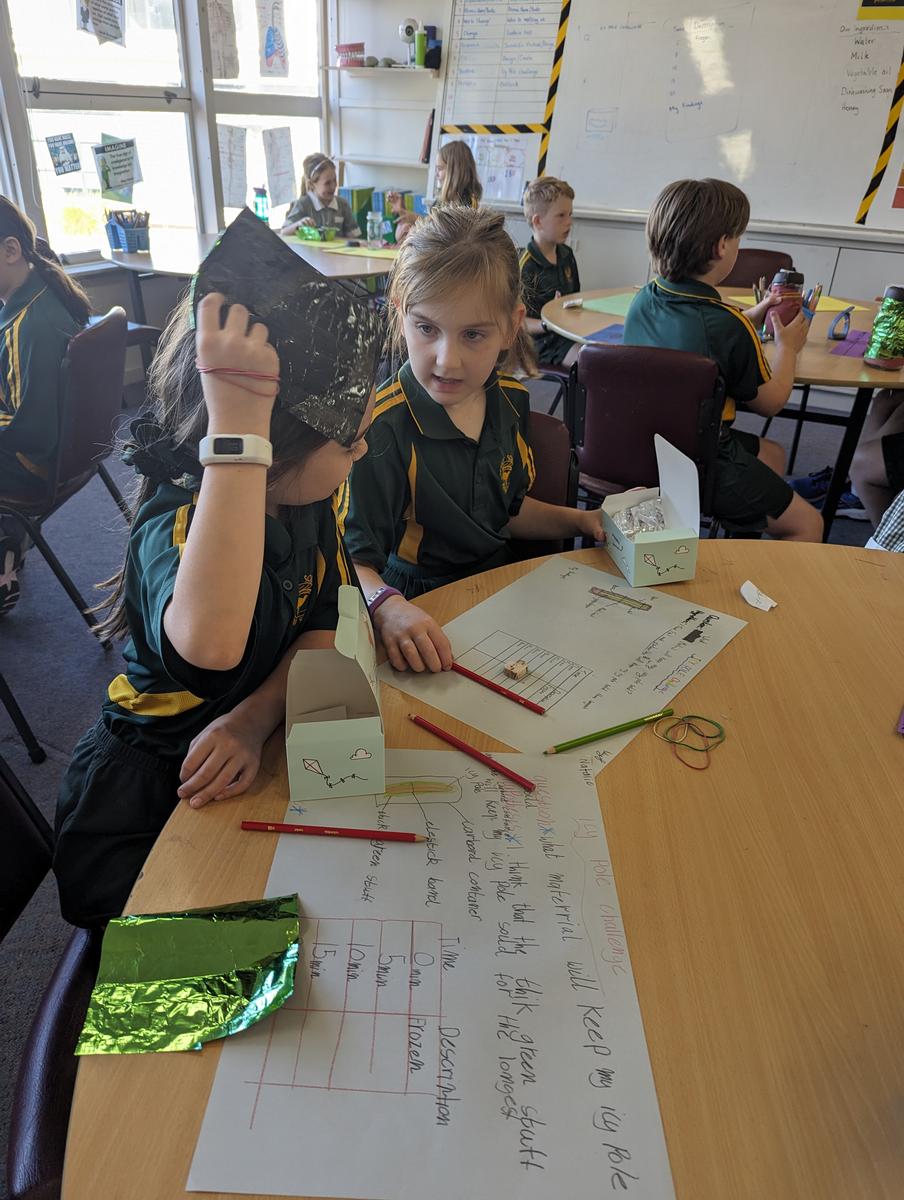













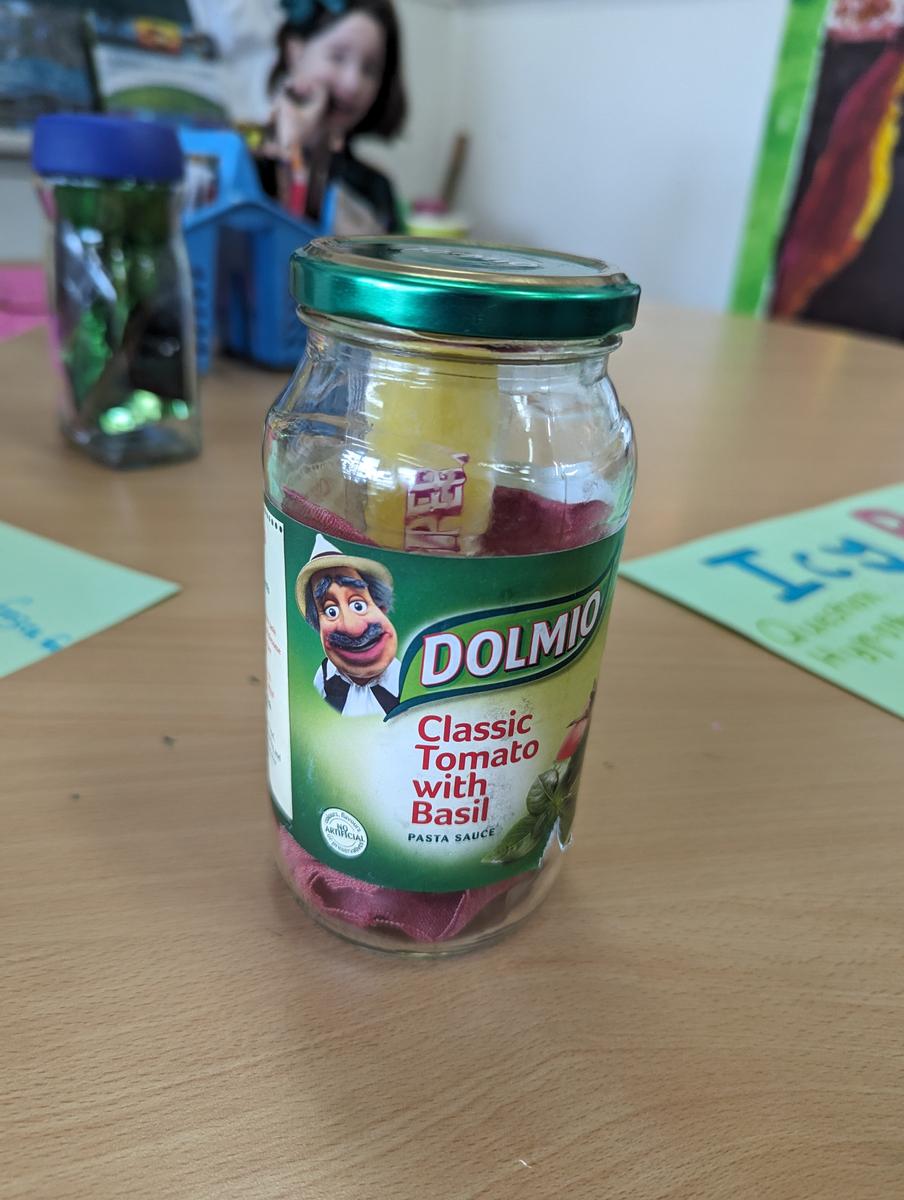

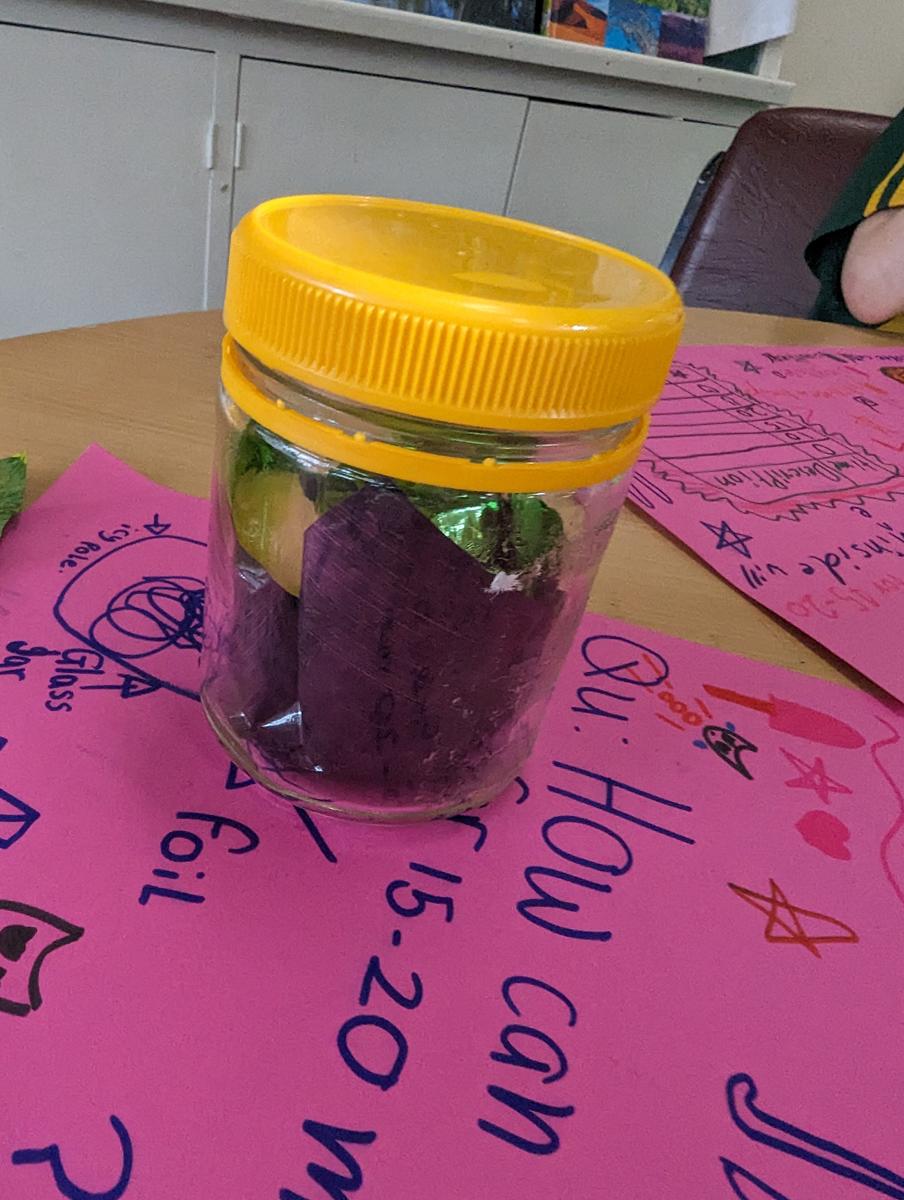































This week to finish off the unit on Chemistry, the students really wanted to make Oobleck, so Oobleck we made!! We discussed how Oobleck is not really a solid or a liquid, but it’s actually known as a non-Newtonian fluid, in that when you put more force to it, it acts as a solid but when you are gentle, it acts as a liquid. I gave the students a cup filled with corn flour and a jug of water. We discussed some ways of making Oobleck and decided that we should add the water into the corn flour slowly and bit by bit and test along the way. When the mixture worked, the students were really excited and amazed at how this substance could act as too different states of matter. They really enjoyed putting their hands in and getting dirty.
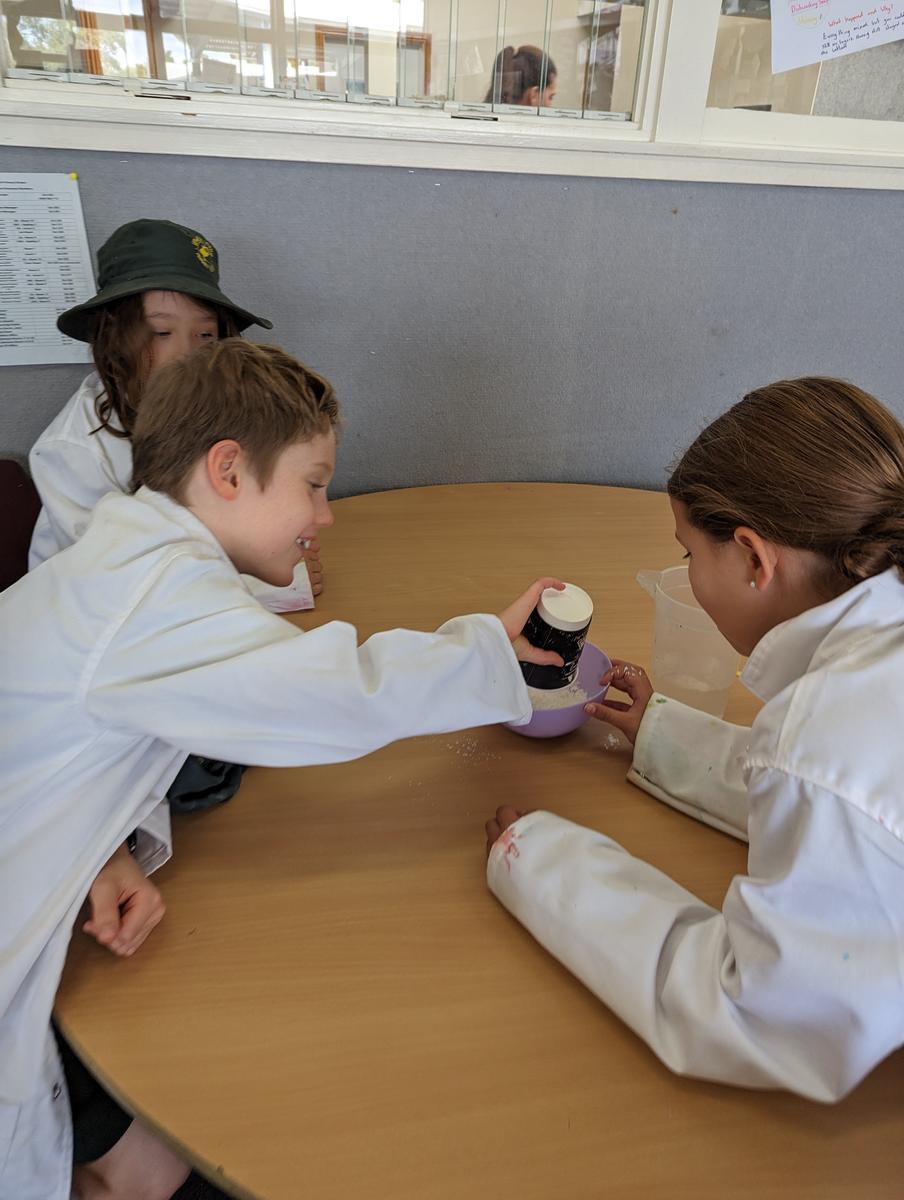



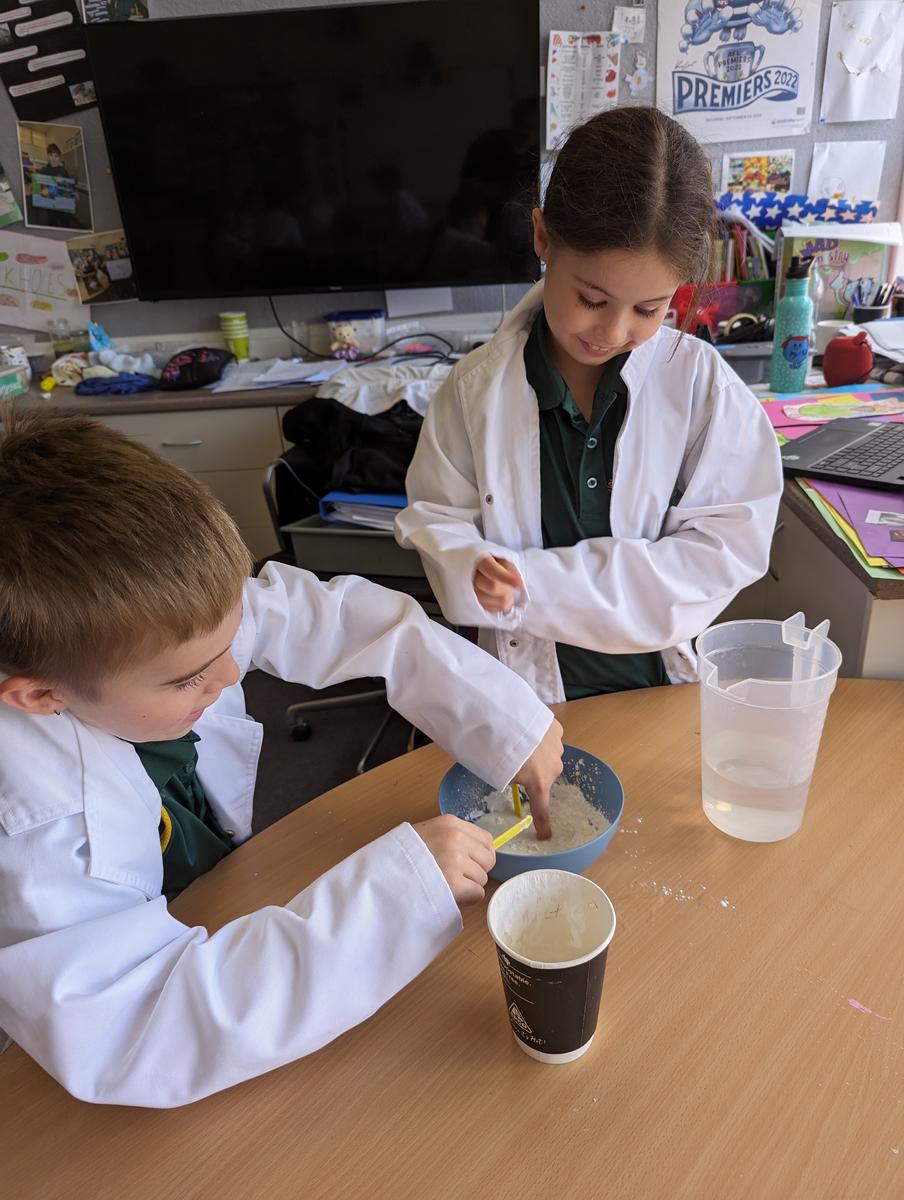



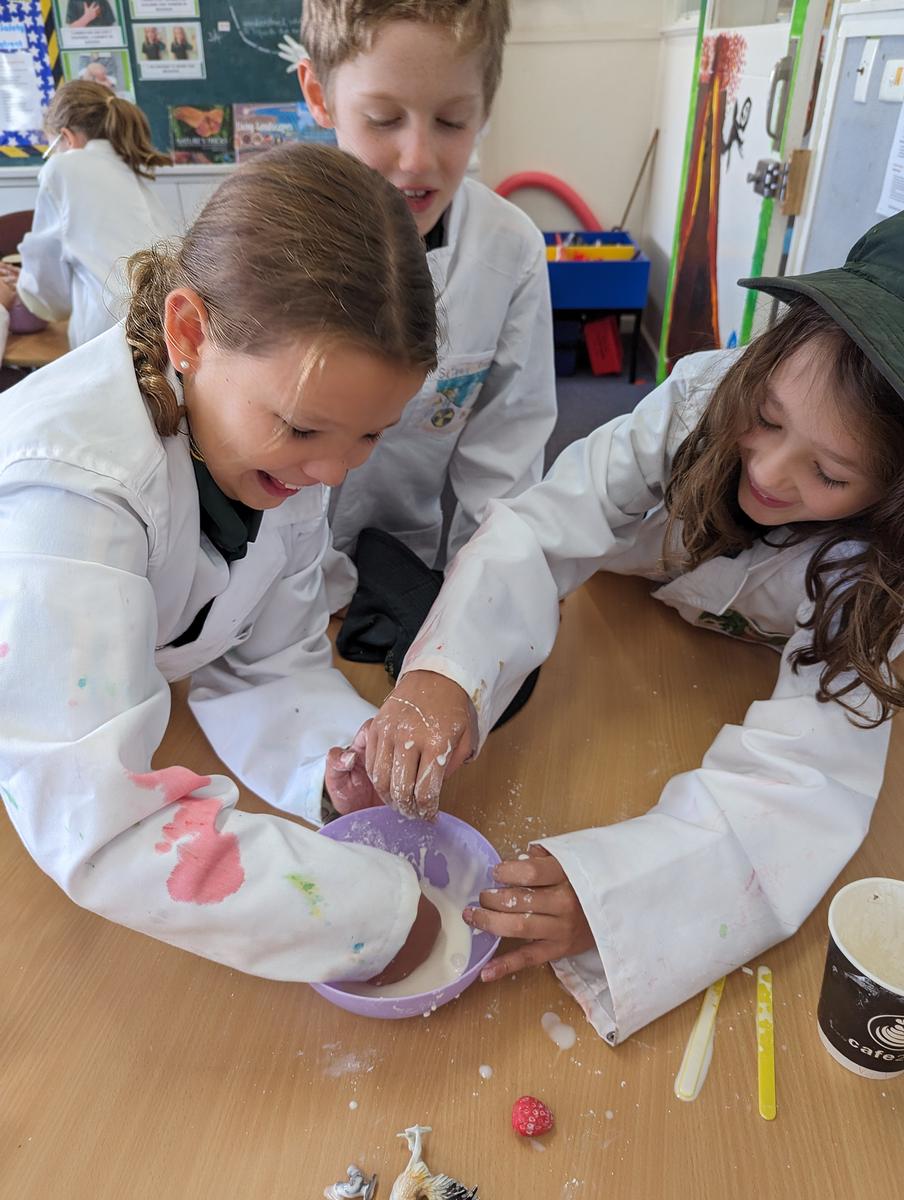



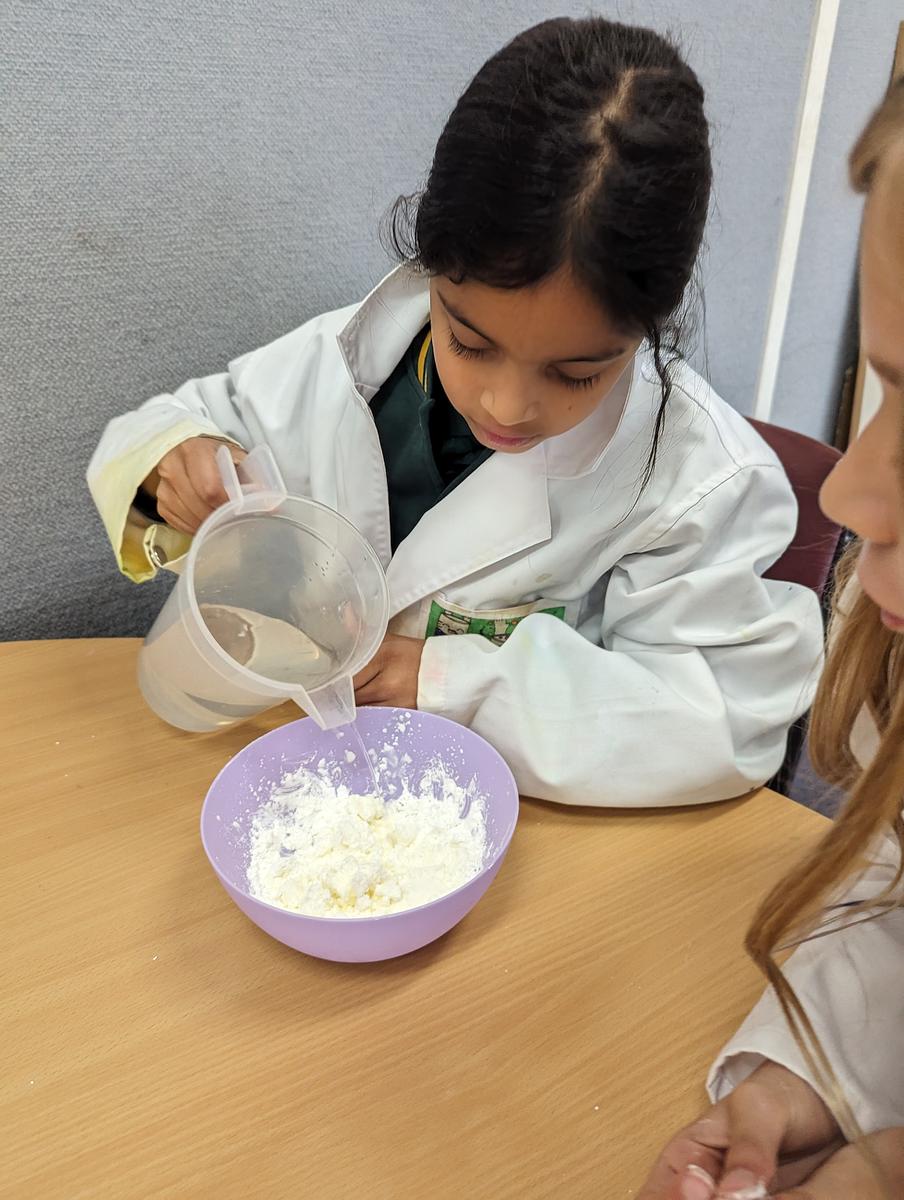























To wrap up our Chemical Science unit on Physical and Chemical changes, I decided the grade 5/6 students should do a Portfolio task they could eat!! There’s no better way to learn about these changes, than by a hands-on activity like cooking - so, we made pancakes. The students worked as teams to read the recipe, collect the ingredients and make the pancake batter. Along the way they had to answer some questions. Most of them were still really surprised that mixing the batter is still only a physical change, as although it would be hard to reverse the mixture, no new substance had been created and therefore it is not considered a chemical change. After a safety talk, students came up in small groups to watch the pancakes cooking. We discussed the bubbles forming, and how they show that they were ready to flip and that those bubbles were a sign of a chemical change. We also discussed that once the pancake was cooked, if we cut it, it is a physical change as it’s just the shape or size that has changed, not the properties. I loved how engaged the students were with this lesson and how much learning took place! I also loved that they really enjoyed doing a Portfolio Task that they could eat!



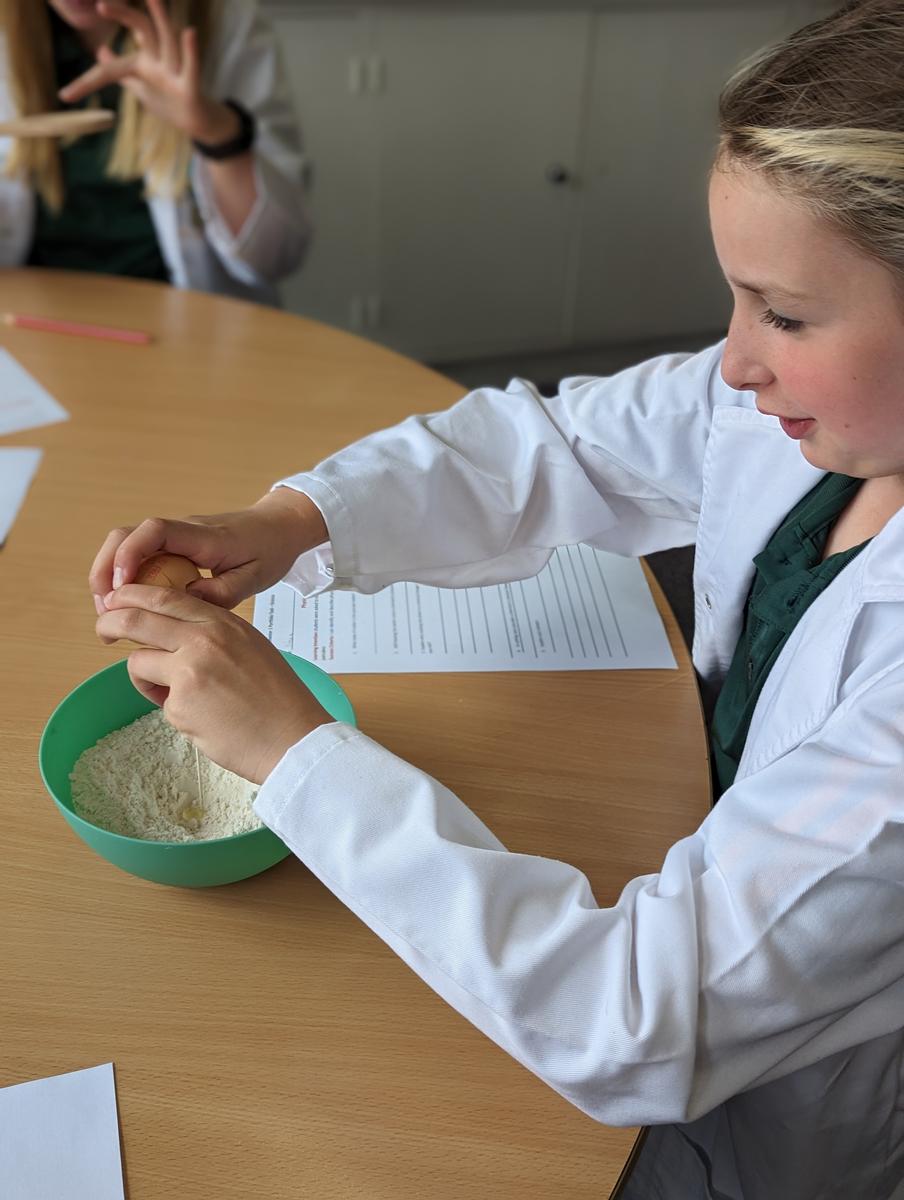


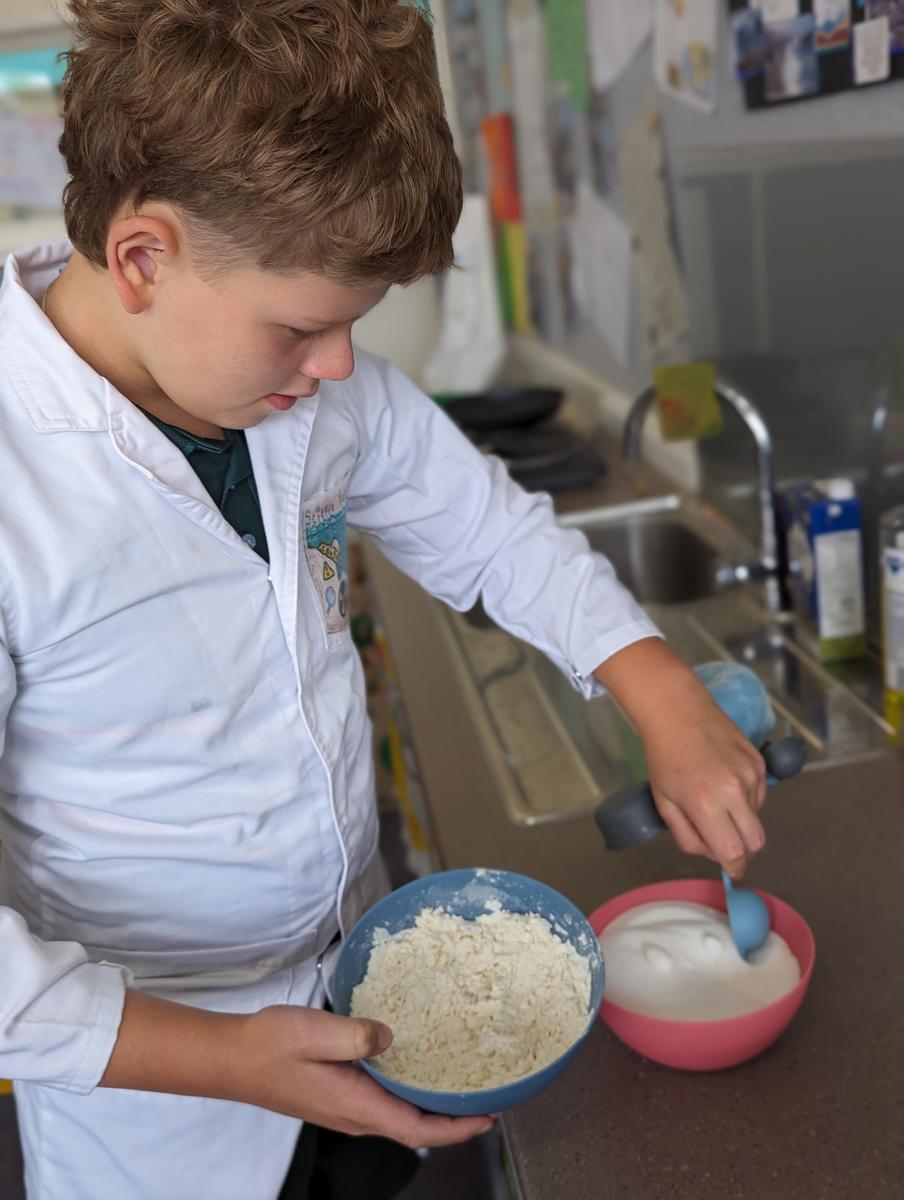


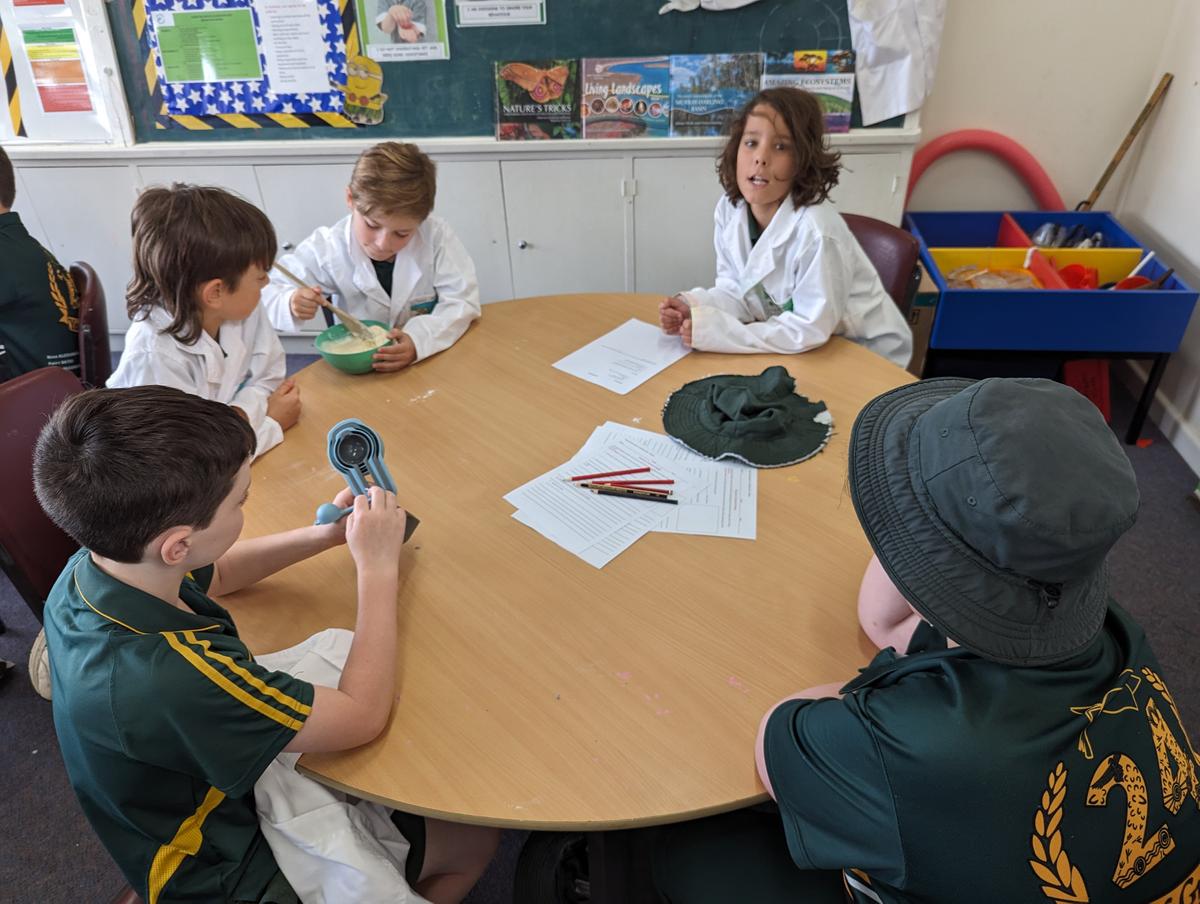
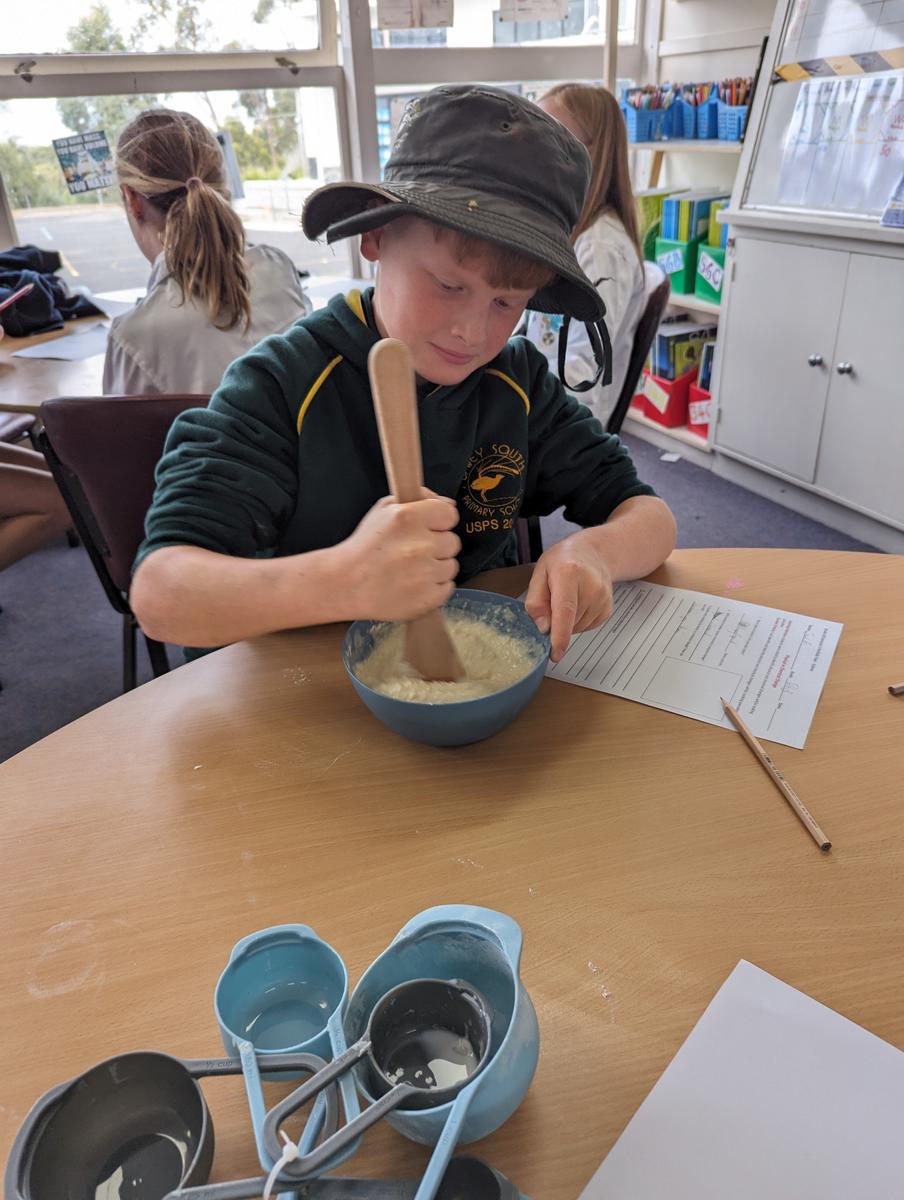





















A few weeks ago, I asked the students to research some experiments they had seen and would like to try, to see if they work. We call it “Busters!” Throughout the year, I will have some random “Busters!” weeks, where we will try one or two experiments for that lesson. We had our term 1 “Busters!” week, last week! We had a go at making a density rainbow. The students were given a selection of liquids of different densities and colours (honey/golden syrup, water, dishwashing liquid, milk and oil). They had to predict which liquid they thought was the most dense and would sink to the bottom, and guess the rest all the way up to the least dense. They then conducted the experiment and waited a few moments for the liquids to find their place. Some of the students were pretty surprised to see the oil go all the way to the top of the jar, even higher than water. The students then had to record the results and try and discuss what had happened. This was a really interesting experiment and it looked really pretty too!!












